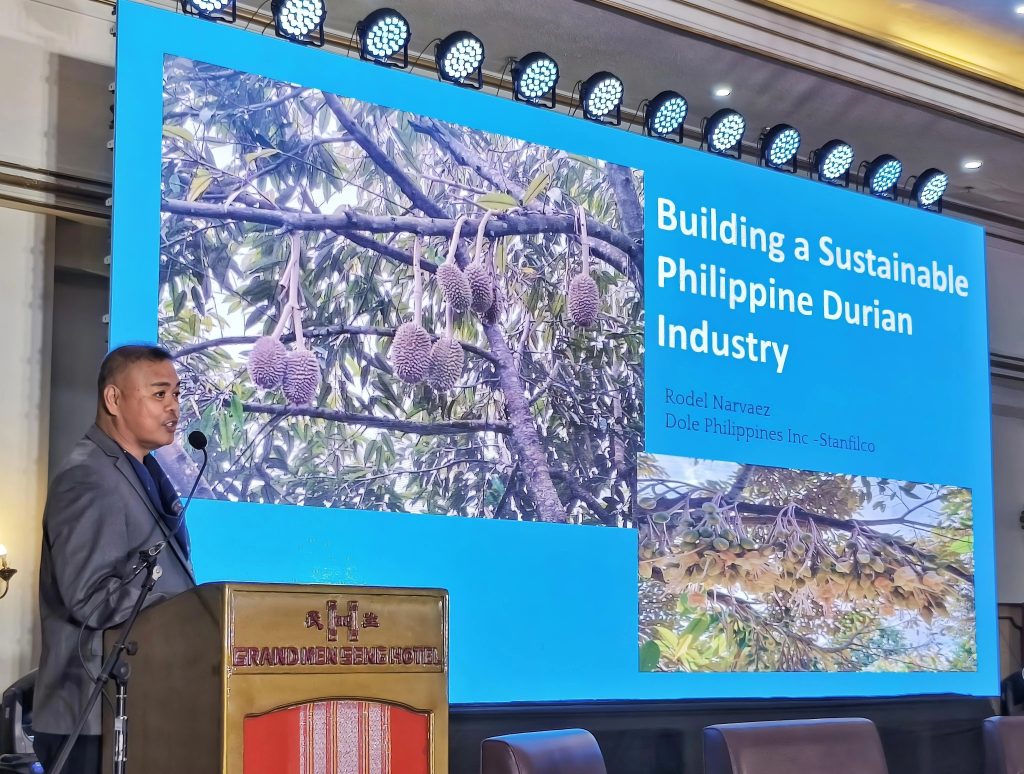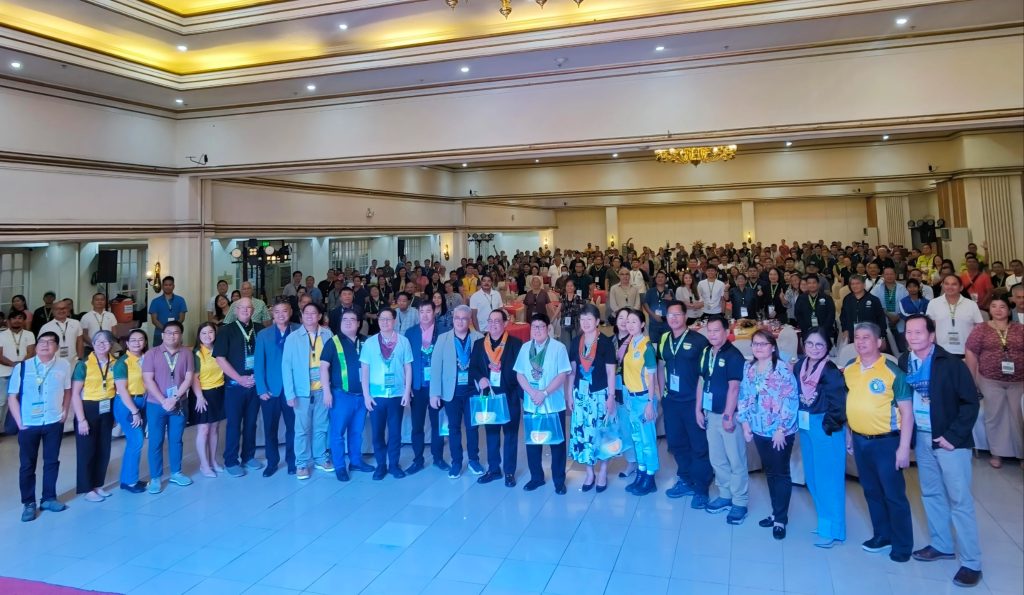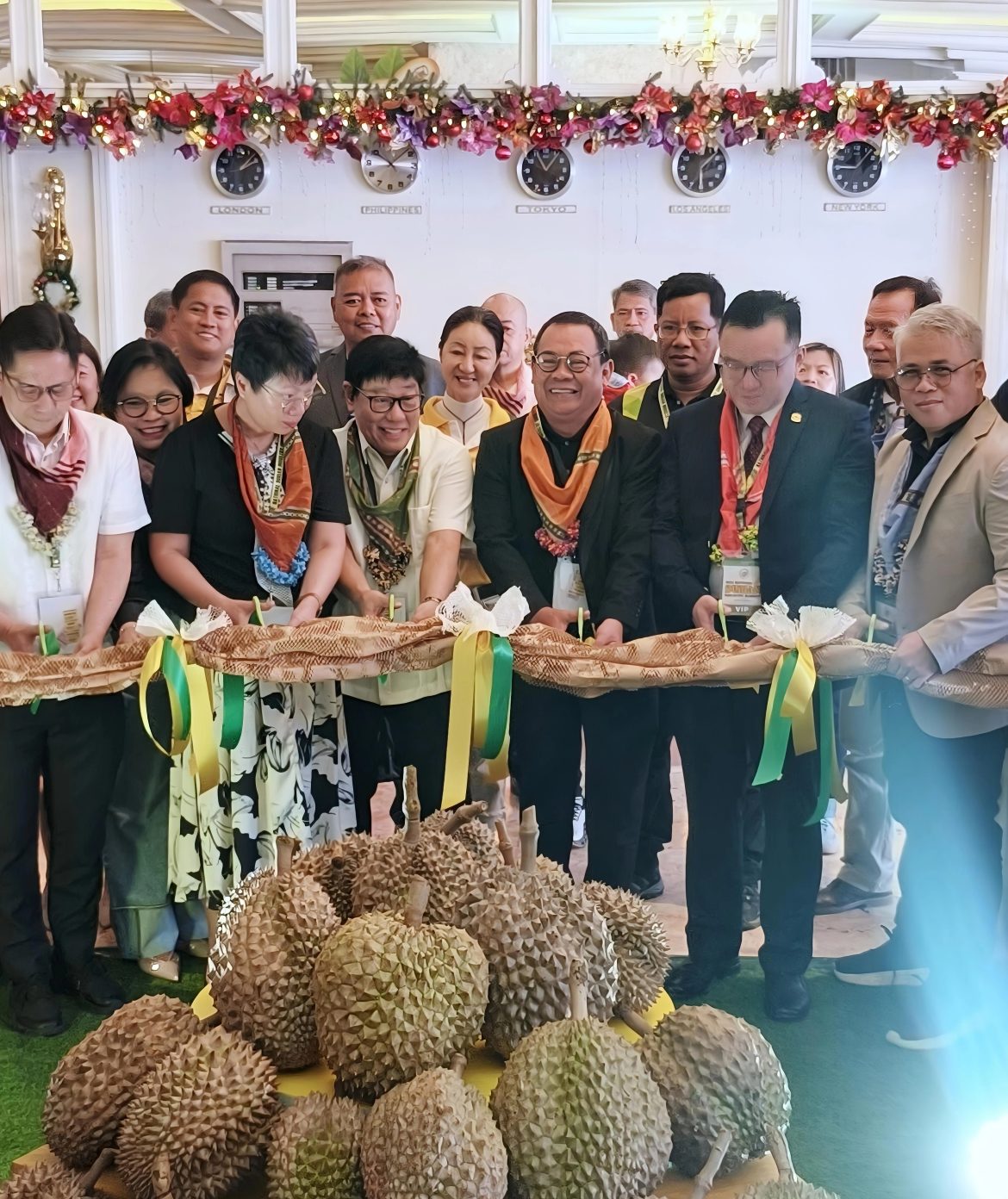THE DISTINCTIVE aroma of opportunity filled the air at the Grand Men Seng Hotel on Tuesday, Nov. 25, as the National Durian Industry Summit 2025 officially opened, bringing together the country’s top agricultural leaders and stakeholders to chart the future of the “King of Fruits.”
The two-day summit kicked off with a ceremonial ribbon-cutting at the hotel lobby, led by Durian Industry Association of Davao City (DIADC) president Emmanuel Belviz. He was joined by key dignitaries including Department of Agriculture (DA) Assistant Secretary Philip Yang, DA XI executive director Macario Gonzaga, Bureau of Plant Industry director Gerald Glenn Panganiban, and DOST XI regional director Dr. Anthony Sales.
Underscoring the international significance of the trade, Consul General of China Zhao Xiuzhen and Consul General of Malaysia Deddy Faisal Ahmad Salleh were also in attendance.
Hundreds of durian farmers, growers, processors, exporters, and researchers from across the Philippines gathered for the event, signaling a united front to elevate the Philippine durian on the world stage.
Gonzaga set the tone for the summit, emphasizing the government’s commitment to the sector.

”This is a strategic investment and the future of an industry that holds immense promise not only for Davao Region but for the entire country,” Gonzaga stated.
He affirmed that the DA recognizes the “bright, transformative” future of the industry, pledging continued support through the High-Value Crops Development Program. This includes market development, investment assistance, and aligned interventions that place durian farmers at the heart of agricultural progress.
During the opening program, Belviz presented a reality check regarding the Philippines’ standing in the global market. While global trade for durian is projected to reach a staggering 4.5 billion kilograms by 2030, the Philippines currently holds a small slice of the pie.
Belviz reported that as of 2023, Indonesia (39.36%), Thailand (31.49%), and Vietnam (17.02%) dominate world production, while the Philippines holds only a 1.67% production share. In terms of exports, Thailand leads with a massive 61.16% share, overshadowing the Philippines’ 0.306%.
Rodel Narvaez, public relations officer of the Durian Exporters Association of the Philippines, highlighted that while Davao Region contributes 75% of the country’s 70,000-80,000 metric ton annual yield, the industry faces significant hurdles. These include uncontrolled nursery practices, fragmentation of government efforts, climate change phenomena like La Niña, and a lack of a cohesive national strategy.

Narvaez also addressed quality concerns regarding the popular “Puyat” variety. While known for its strong flavor and excellent eating quality, it often faces issues with visual appeal—such as soft thorns, molds, and inconsistent maturity—which lowers its market value compared to competitors.
Consequently, global exports saw a decrease in 2024 due to China’s stricter quality controls and aggressive market competition.
Despite these challenges, the data shows an industry experiencing explosive growth. Narvaez noted that the Philippines’ world durian export volume has skyrocketed from a mere 540 metric tons in 2021 to 16,073 metric tons in 2024—representing a staggering 2,876.48% growth.
Infrastructure is also catching up. Belviz noted that the number of durian exporters in Davao has jumped from just four in 2023 to 23 in 2025. Furthermore, there are now 26 durian packing houses and 795 registered farms covering over 1,800 hectares.
Commercial success is already being realized. Just earlier this month, during the China International Import Expo in Shanghai on November 5, three Davao-based exporters clinched deals with Chinese importers worth US$36.6 million.
To sustain this momentum, Narvaez suggested establishing a distinct “National Identity” for Philippine durian, positioning its bold flavor profile as a premium standard while adhering to sustainable production practices.
Belviz added that while the export market is lucrative, the local market remains a sleeping giant with high potential due to currently low local consumption rates.

To date, Philippine durian has reached markets in China, Thailand, Hong Kong, Singapore, Malaysia, the UAE, South Korea, Japan, the USA, Australia, the UK, and Taiwan. The industry is now eyeing entry into new territories, including New Zealand, Egypt, and Uzbekistan.
As the two-day summit continues, the focus remains clear: transforming the Philippine durian industry from a promising contender into a global powerhouse.



